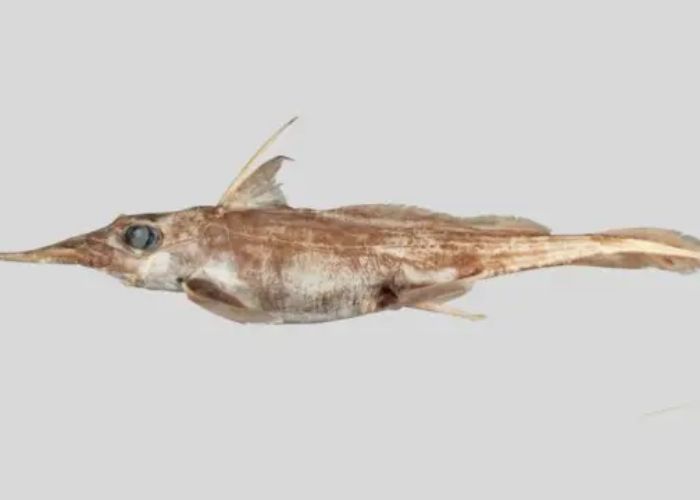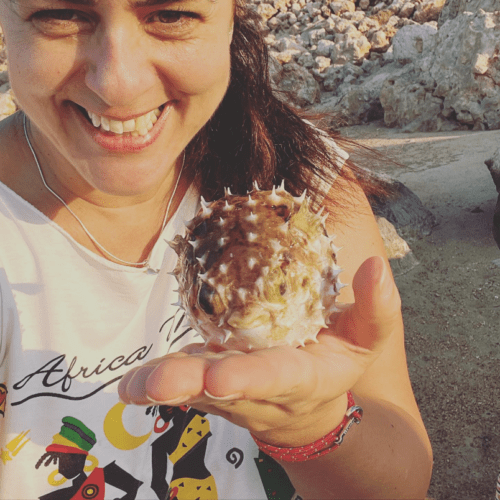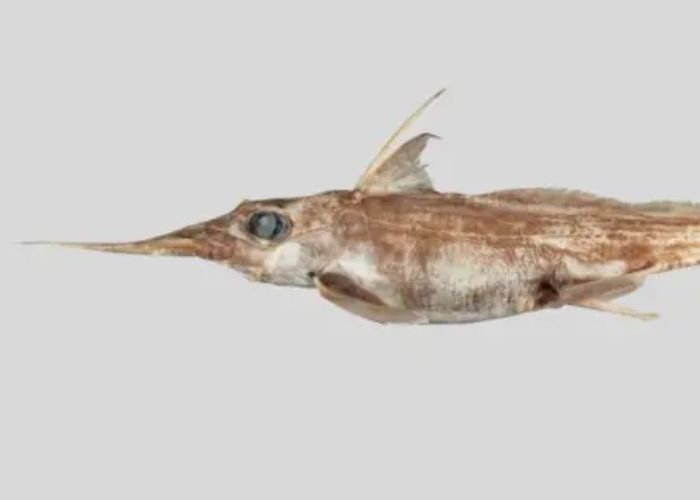I’m a marine biologist who has worked in oceans around the world for over seven years studying sharks and other fish. I was very excited to hear that scientists have found a new type of ghost shark off the coast of New Zealand’s Chatham Rise. This find shows us how much we still need to learn about the huge variety of life in our seas. Read on to learn more about “New Ghost Shark Species Discovered in New Zealand Waters.”
Table of Contents
What Are Ghost Sharks?
The new species is called Hydrolagus trolli, and it is a chimaera fish. These fish are often called “ghost sharks” because they are pale white and have big eyes. Even though they look like sharks, ghost sharks are more closely related to rays and skates. Genetic testing and looking at physical traits like fin form and count helped scientists figure out that this new species is different from other known ghost sharks.
The Discovery at Chatham Rise
Andrew Stewart and his team from New Zealand’s National Institute of Water and Atmospheric Research (NIWA) found H. trolli while they were surveying Chatham Rise, an area of ocean floor to the east of New Zealand’s South Island. When the new species was found, it was at depths of about 1,000 meters, in water that was muddy. More than 100 specimens were gathered for study. The holotype is an adult male that is about 60 cm long.
A small second dorsal fin, a short caudal fin, and a first dorsal fin that starts behind the pelvic fins are some of the most important ways to tell H. trolli apart. The species name “trolli” comes from the fact that the ghost shark’s eyes and big teeth look like those of a troll. Since Hydrolagus bemisi was found in 2002, this is the first new species of ghost shark to be named from New Zealand.
As someone who has studied sharks for a long time, I can tell you how exciting and satisfying these finds can be. It means we still have a lot to learn about the seas and the creatures that live in them when a new species is found. Finding a new species is like finding a big puzzle piece that helps us understand evolution, ecology, and biodiversity.

The ghost shark family is interesting in and of itself. They split off from other shark and ray species about 150 million years ago and have looked the same ever since. So-called “living fossils” give us a look into the deep past of evolution. About 20 types of ghost sharks have been named so far, and they live in temperate and tropical oceans. They live in shallow shore waters all the way down to at least 2,000 meters deep.
The Importance of Deep-Sea Adaptations
There are some special things that ghost sharks have done that help them do well in the deep sea. Their lateral line system is very sensitive to movement and sound, which is probably how they were able to find food in the dark. They can see well in low light because their eyes are big. They can also make a poisonous slime from their skin, which may help protect them from being eaten.
Compared to other sharks and fish, not much is known about the ecology and biology of ghost sharks because they are hard to study in the deep sea where they live. Submersibles, remotely controlled vehicles, and deep-sea cameras will be used to study this new species in its natural setting even more now that H. trolli has been found.
Some important research questions that I hope will be answered in future studies are about diet and how animals find food, habitat use and range, age and growth, reproduction, and how groups are connected. It is also possible to learn a lot about how species in the genus Hydrolagus and the chimaera order as a whole have evolved together.
Ghost Sharks Need Help with Conservation
When new deep-sea species are found, I worry about the danger of hunting because I work to protect sharks. It’s possible for ghost shark populations to drop because they don’t reproduce very often. Hopefully, the New Zealand government will act quickly to keep commercial fishing from happening in areas where H. trolli lives and where it lives. Maybe this finding can be used to back up marine protected areas on Chatham Rise and other important deep-sea ecosystems.
Over the past ten years, it has been satisfying for me to see technology for exploring and studying the deep ocean keep getting better. Scientists can now study species and environments that they would not have been able to before thanks to new submersibles like the NIWA’s Deep Towed Imaging System. And progress in genetics has made it possible to tell the difference between new species based on very small changes in their DNA.
In the beginning of my work, I spent a lot of time looking at ghost shark specimens in museums. This makes me realize how hard it would have been to tell H. trolli apart without these modern tools. We quickly find new shark and fish species every year, often with the help of strange specimens caught by local fishers.
What’s Next for Exploring the Deep Ocean
Even though I’m an old researcher, I can’t wait to see what the next group of marine biologists find in the next few decades. If a new ghost shark can be found in the waters around New Zealand, just think of what else is out there in the deep ocean that hasn’t been studied as much. The amount of information we have about the different kinds of life that live in the world’s biggest habitat is definitely not enough.
Conclusion
The discovery of Hydrolagus trolli is a good warning that our knowledge of biodiversity is still very limited, even though we think we have mapped the whole ocean floor and named most of the big marine species. Every new species found not only adds to our knowledge of the world’s living things, but it also gives us a chance to be amazed by how diverse and abundant life is. It makes me excited to see what else we can find in the deep!

Marta, the driving force behind WaterWorldCraze.com, holds a Master’s degree in Marine Biology and has extensive experience in water sports and activities. With over 7+ years of hands-on experience in marine research and conservation, she has participated in numerous underwater expeditions and projects. Her passion for the aquatic world shines through in her expertly curated content. Join Marta as she explores the wonders of marine life and shares her adventures. Connect with her on Instagram @marinebiologymarta for more insights and updates.

